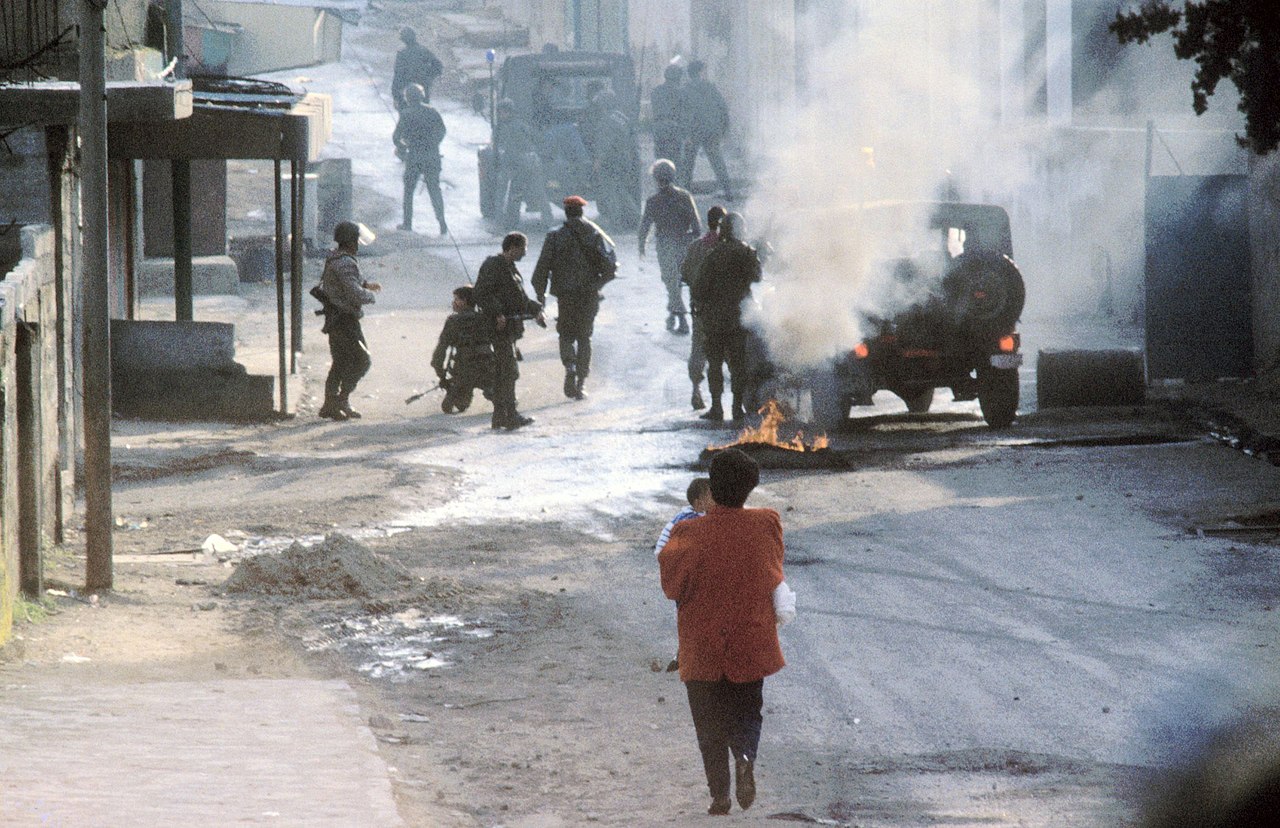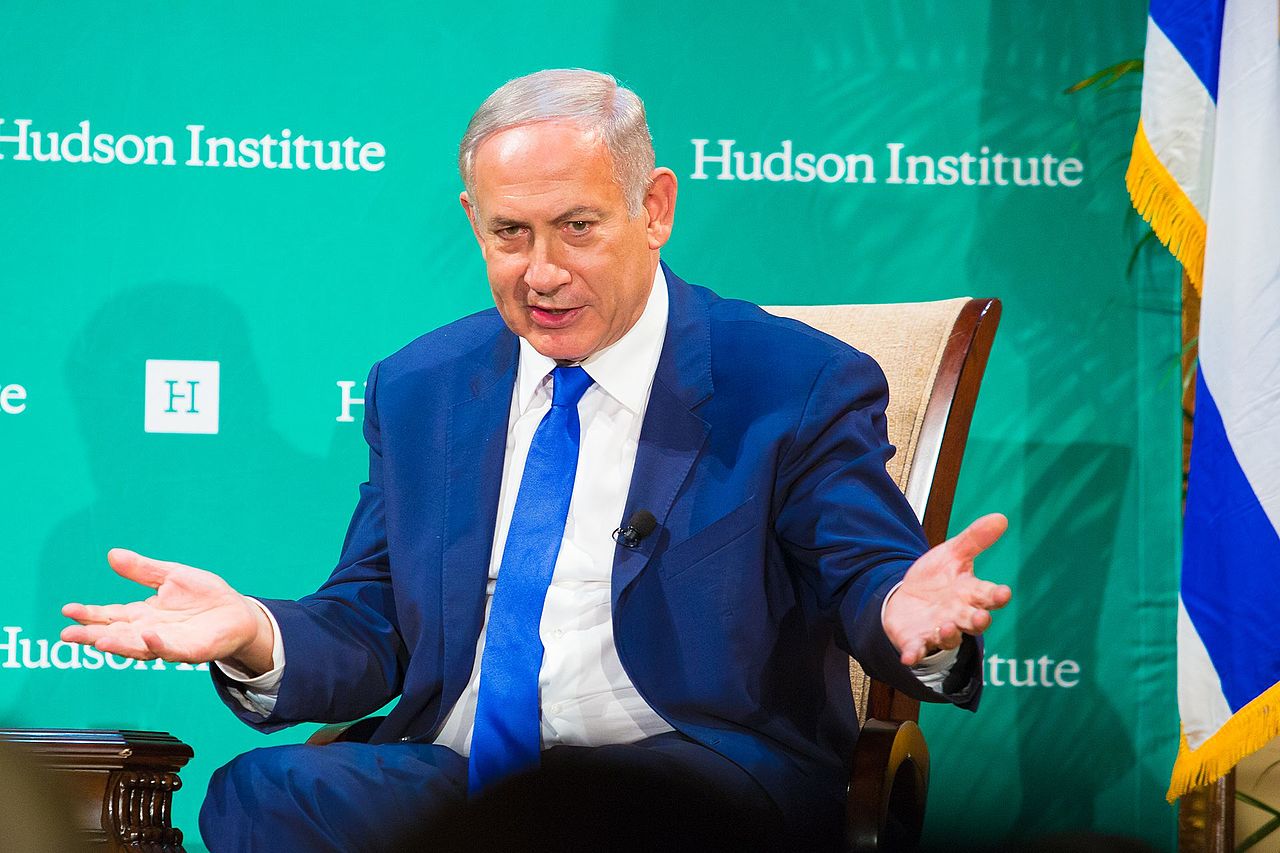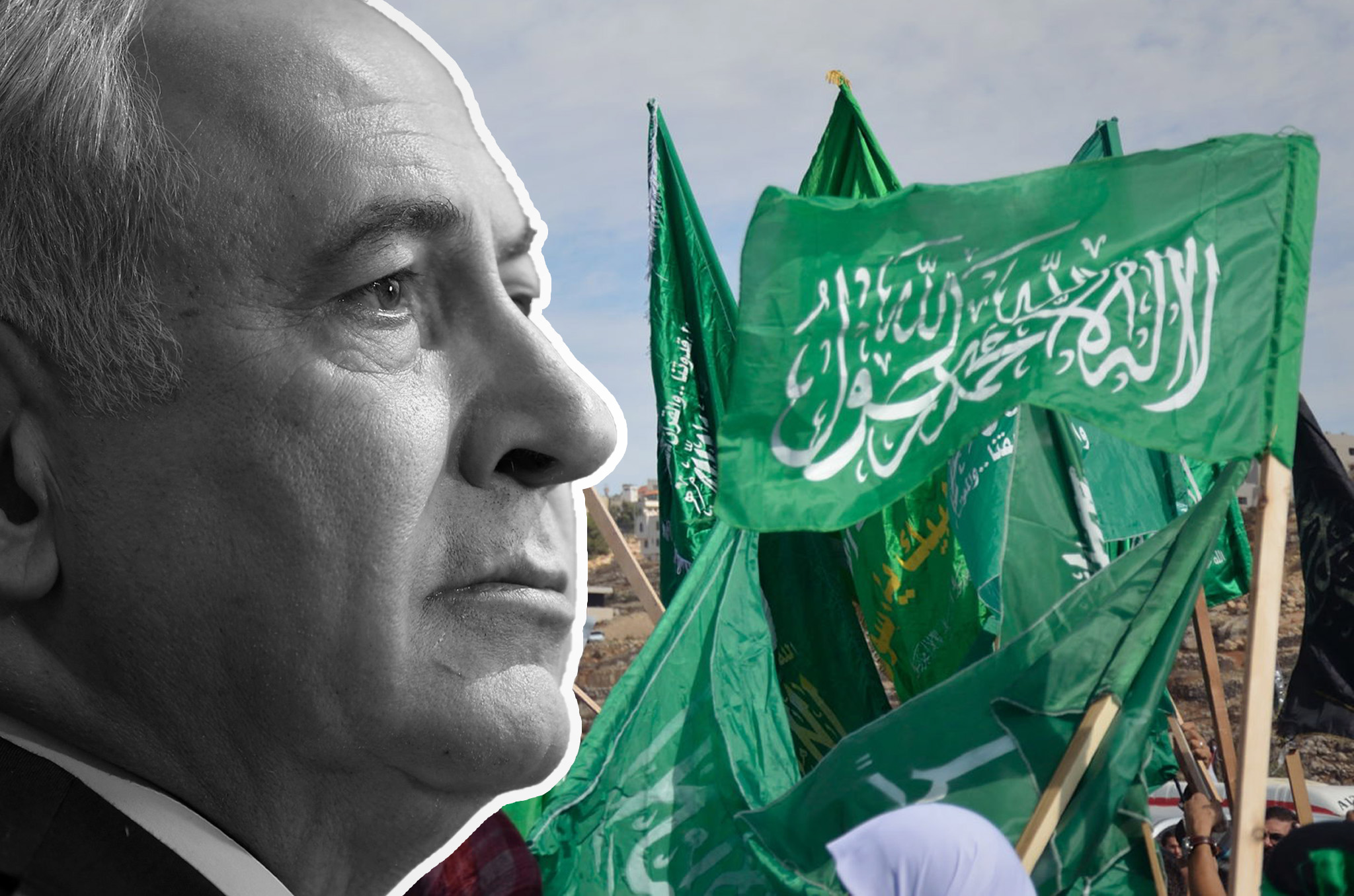Israel describes its ethnic cleansing in Gaza as a "war against Hamas", and calls any support for Palestine "terrorist sympathy". At the same time, Israel has done everything possible to strengthen Hamas’ grip on Gaza, as a counterbalance to the socialist and secular currents of the Palestinian freedom struggle. So who is really fuelling terrorism?
[Originally published in Swedish at marxist.se]
The slogan of the communists, "Intifada to victory", has been deliberately misinterpreted by reactionaries and reformists around the world. In Britain, The Telegraph has accused our comrades of "inciting violence" in universities. In Switzerland, police have tried to stop our student demonstrations after several tabloids warned of "pro-Hamas rallies" at universities. In Sweden, our comrades at Lund University have been accused of calling for "waves of terror" in the local student newspaper.
Any call for an intifada is equated with support for the Hamas attack on 7 October - something that could not be further from the truth. The intifadas' revolutionary and democratic traditions of mass protests, boycotts and strikes have long been a thorn in the side of the Israeli occupying forces. And precisely because of this, Hamas has long enjoyed indirect political and economic support from Israel.
"A counterweight to the PLO and communists"
Hamas was formed from the Islamist Muslim Brotherhood in the midst of the first intifada in 1988. Its purpose was to defend the interests of Mujama al-Islamiyah, a charity founded by the Brotherhood's leader in Gaza, Sheikh Ahmed Yassin. After two decades of persecution in Egypt under Nasser, the Brotherhood sought a safe haven in Gaza, which had come under Israeli rule after the 1967 Six Day War. Israel opened the door, gave legal recognition to the organisation and allowed them to freely accumulate capital and properties during the 1970s and 1980s. A large network of schools, mosques and Gaza's universities was built, giving the Brotherhood a strong new base.
The Mujama's growing material and political influence in Gaza inevitably brought them into conflict with the Palestinian left and the PLO. Among other things, they stormed the offices of the Red Crescent (the Muslim equivalent of the Red Cross), and attacked cinemas and bars, all while the Israeli military stood by watching. Israel's persecution of Fatah members (the main political faction of the PLO, and current ruling party in the West Bank) further strengthened the group politically. "Our biggest enemy was Fatah'' admitted Yitzhak Segev, Israeli military governor of Gaza in the 1980s. Hamas, he said, was "still 100 percent peaceful".
In 1984, a weapons cache was found in one of the organisation's mosques and Yassin was arrested. According to David Hacham, an Israeli military expert in Gaza, in an interrogation, Yassin said that the weapons would be used against Palestinian rivals, not Israel. He was released the following year, and the Mujama and Israel continued to enjoy good relations throughout the 1980s. When secular Fatah members and Islamist students clashed at Birzeit University in the West Bank in 1986, the Israeli military gave the go-ahead for Mujama supporters to join the Islamist students. IDF General Shalom Harari granted safe passage with the words: “If they want to burn each other, let them go”.
Military Governor Segev and Yassin eventually developed a close friendship, with Segev for example arranging for him to receive medical treatment in Israel. According to a US intelligence report, the general later admitted to helping finance "Islamist movements as a counterweight to the PLO and communists."
The first intifada and the capitulation of the PLO
 The first intifada shook Palestine like an earthquake / Image: Efi Sharir, Wikimedia Commons
The first intifada shook Palestine like an earthquake / Image: Efi Sharir, Wikimedia Commons
The first intifada shook Palestine like an earthquake. Hundreds of thousands of Palestinians took to the streets, protesting, striking, throwing stones and forming revolutionary committees. The struggle for freedom had entered a new stage, which took the Mujama and the Muslim Brotherhood by surprise. The Brotherhood had long opposed violent struggle against Israel. But with a mass movement on their hands, the Mujama realised that their entire political legitimacy and activity in Gaza depended on their active participation. So they formed Hamas, to secure the Mujama's interests in Gaza through armed struggle against Israel. One year into the intifada, Hamas published its infamous, openly anti-Semitic charter, where the goal of destroying the state of Israel through jihad is proclaimed.
Despite this, Israel maintained close contact with the newly formed Hamas during the early stages of the intifada. Mahmoud Zahar, one of the founders of Hamas, often met with Israeli Defence Minister (and later Prime Minister) Yitzhak Rabin as part of regular negotiations between Israel and non-PLO Palestinians.
By giving political legitimacy to Hamas, Israel hoped to reduce support for Fatah but also for the revolutionary committees that had initially led the struggle. Tony Cordesman, a Middle East analyst at the Centre for Strategic Studies, said that Israel "gave direct support to Hamas – the Israelis wanted to use them as a counterweight to the PLO". A former CIA agent added that the support "was a direct attempt to divide and dilute support for a strong, secular PLO through the use of a competing religious alternative".
The early leaders of the Intifada succumbed one by one to the violent repression, opening the way for Arafat and the PLO to take over the leadership. The thousands of revolutionary committees formed during the intifada were absorbed into the PLO structure, stifling mass participation in the struggle. Arafat quieted down the movement's most radical demands, advocating a two-state solution and recognising the state of Israel. Now, with the revolutionary explosive force of the intifada neutralised, Israel saw the PLO in a new light. Negotiations began and led in 1993 to the Oslo Accords, which guaranteed a Palestinian semi-state in exchange for the PLO acting as the imperialists' watchdog and putting a wet blanket over any outbreak of struggle.
Hamas grew as the main opponents of the Oslo Accords. Terrorism becomes an increasingly important part of their activities. In response to the 1994 Hebron massacre, it carried out the first suicide bombing against Israeli civilians. Israel shifted from one foot to the other, and increasingly emphasised the threat of Hamas in its anti-Palestinian propaganda. With the blockade of Gaza in 2006 and the creation of the world's largest open-air prison, the last material foundation for the terrorist organisation to grow strong was laid.
Do you support Hamas, Netanyahu?
Israel's tactical relationship with the Mujama, Hamas and other Islamist elements has undergone constant change, but the underlying strategy has always been the same. The Israeli government uses the threat of Hamas to discredit a future Palestinian state, and by giving legitimacy to Hamas rule in Gaza, it hopes to drive a wedge between Palestinians there and those in the West Bank. Netanyahu has given support to Hamas with one hand and turned the sword on them with the other.
 The Israeli government uses the threat of Hamas to discredit a future Palestinian state / Image: Hudson Institute, Wikimedia Commons
The Israeli government uses the threat of Hamas to discredit a future Palestinian state / Image: Hudson Institute, Wikimedia Commons
“One of the main people contributing to Hamas’s strengthening has been Bibi Netanyahu, since his first term as prime minister.” according to Yuval Diskin, former head of the Israeli security service Shin Bet. Netanyahu's tactic is to cynically use Hamas to divide and rule in the Palestinian territories. Hamas is a battering ram against the PLO in the West Bank, which two-state zealots see as the natural bedrock of a future Palestinian state, and which therefore enjoys greater international legitimacy.
One of Netanyahu's close associates, Gershon Hacohen, accidentally recognised this in a 2019 interview. "We need to tell the truth. Netanyahu’s strategy is to prevent the option of two states, so he is turning Hamas into his closest partner. Openly Hamas is an enemy. Covertly, it’s an ally." In this way, explained Israeli President Ehud Barak in 2019, "it’s easier with Hamas to explain to Israelis that there is no one to sit with and no one to talk to."
Beyond promoting Hamas politically, Israel has continued to promote it financially in recent years. Between 2012 and 2018, Netanyahu authorised transfers worth a billion dollars between the royal family of Qatar (where Hamas is based) and Hamas in Gaza. Recently, the Israeli newspaper Haaretz revealed that Netanyahu, during a meeting with Knesset members of his Likud’s party in 2019, said that "Anyone who wants to thwart the establishment of a Palestinian state has to support bolstering Hamas and transferring money to Hamas [...] This is part of our strategy – to isolate the Palestinians in Gaza from the Palestinians in the West Bank."
In 2020, a political scandal erupted in Israel when Defence Minister Avigdor Liberman revealed that Netanyahu had sent Yossi Cohen, head of the Mossad security service, along with Herzi Halevi, the IDF's Gaza officer, to Doha to ask Qatar to continue supporting Hamas. "Both Egypt and Qatar were upset with Hamas and planned to cut ties with them. But suddenly Netanyahu emerged as the defender of Hamas," Libermann said. When photos were published the following year of portfolios containing money for Hamas, both Libermann and Education Minister Naftali Bennet were fired.
The real threat
The story was perhaps best summarised by Larry Johnson, a former US State Department counter-terrorism official. In an interview, he reportedly said that: "The Israelis are like a guy who sets fire to his hair and then tries to put it out by hitting it with a hammer [...] They do more to incite and sustain terrorism than curb it.”
The propaganda about the "threat of Hamas" that is now being rolled out serves a clear purpose: to divide and discredit the struggle of the Palestinian people. Netanyahu and Israel have long treated Hamas as an asset, not a threat. At crucial times, they have strengthened rather than weakened its influence. The relationship has gone through different phases over the years, but the aim of Israel has been the same: to use Hamas as a battering ram against the democratic, secular, socialist and communist elements of the Palestinian freedom struggle.
Israel has made it clear that the intifada is the real threat to the occupation. And despite all of Israel's attempts to divide and destroy the Palestinian resistance movement, the Palestinian masses have risen again and again. No army, no security service, no "Iron Dome" can stop the immense power of the mass struggle, the general strike and international workers’ solidarity. Therefore we say: Intifada to victory!

